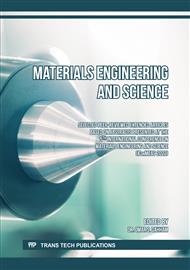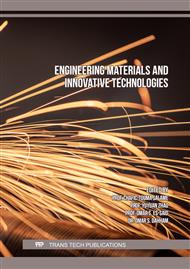[1]
M. Asif, T. Muneer, Energy supply, its demand and security issues for developed and emerging economies, Renewable and Sustainable Energy Reviews, 11 (2007) 1388- 1413.
DOI: 10.1016/j.rser.2005.12.004
Google Scholar
[2]
R. Gross, M. Leach, A. Bauen, Progress in renewable energy, Environment International, 29 (2003) 105-122.
DOI: 10.1016/s0160-4120(02)00130-7
Google Scholar
[3]
B.J.M. de Vries, D.P. van Vuuren, M.M. Hoogwijk, Renewable energy sources: Their global potential for the first-half of the 21st century at a global level: An integrated approach, Energy Policy, 35 (2007) 2590-2610.
DOI: 10.1016/j.enpol.2006.09.002
Google Scholar
[4]
K. Branker, M.J.M. Pathak, J.M. Pearce, A review of solar photovoltaic levelized cost of electricity, Renewable and Sustainable Energy Reviews, 15 (2011) 4470-4482.
DOI: 10.1016/j.rser.2011.07.104
Google Scholar
[5]
A. Slaoui, R.T. Collins, Photovoltaics: advanced inorganic materials, Encyclopedia of Materials: Science and Technology, (2008) 1-11.
DOI: 10.1016/b978-008043152-9.02196-5
Google Scholar
[6]
D.M. Bagnall, M. Boreland, Photovoltaic technologies, Energy Policy, 36 (2008) 4390-4396.
DOI: 10.1016/j.enpol.2008.09.070
Google Scholar
[7]
K.L. Chopra, P.D. Paulson, V. Dutta, Thin-film solar cells: An overview, Progress in Photovoltaics: Research and Applications, 12 (2004) 69-92.
DOI: 10.1002/pip.541
Google Scholar
[8]
A. Jäger-Waldau, Thin film photovoltaics: Markets and industry, International Journal of Photoenergy, 2012 (2012).
DOI: 10.1155/2012/768368
Google Scholar
[9]
T. Surek, Crystal growth and materials research in photovoltaics: Progress and challenges, Journal of Crystal Growth, 275 (2005) 292-304.
DOI: 10.1016/j.jcrysgro.2004.10.093
Google Scholar
[10]
R.W. Birkmire, E. Eser, Polycrystalline thin film solar cells: Present status and future potential, Annual Review of Materials Science, 27 (1997) 625-653.
DOI: 10.1146/annurev.matsci.27.1.625
Google Scholar
[11]
H.W. Schock, R. Noufi, CIGS-based solar cells for the next millennium, Progress in Photovoltaics: Research and Applications, 8 (2000) 151-160. 154.
DOI: 10.1002/(sici)1099-159x(200001/02)8:1<151::aid-pip302>3.0.co;2-q
Google Scholar
[12]
A.W. Czanderna, Stability of interfaces in solar energy materials, Solar Energy Materials, 5 (1981) 349-377.
DOI: 10.1016/0165-1633(81)90071-x
Google Scholar
[13]
K. Kushiya, Y. Tanaka, H. Hakuma, Y. Goushi, S. Kijima, T. Aramoto, Y. Fujiwara, Interface control to enhance the fill factor over 0.70 in a large-area CIS-based thin-film PV technology, Thin Solid Films, 517 (2009) 2108-2110.
DOI: 10.1016/j.tsf.2008.10.125
Google Scholar
[14]
J. Nelson, The physics of solar cells, Imperial College Press, (2003).
Google Scholar
[15]
C. Wadia, A.P. Alivisatos, D.M. Kammen, Materials availability expands the opportunity for large-scale photovoltaics deployment, Environmental Science and Technology, 43 (2009) 2072-2077.
DOI: 10.1021/es8019534
Google Scholar
[16]
B.A. Andersson, Materials availability for large-scale thin-film photovoltaics, Progress in Photovoltaics: Research and Applications, 8 (2000) 61-76.
DOI: 10.1002/(sici)1099-159x(200001/02)8:1<61::aid-pip301>3.0.co;2-6
Google Scholar
[17]
B.A. Andersson, C. Azar, J. Holmberg, S. Karlsson, Material constraints for thin-film solar cells, Energy, 23 (1998) 407-411.
DOI: 10.1016/s0360-5442(97)00102-3
Google Scholar
[18]
J.D. Jorgenson, M.W. George, Mineral commodity profile indium, USGS Open-File Report, 1300 (2004).
DOI: 10.3133/ofr20041300
Google Scholar
[19]
Tabares, F.L. and Junkar, I., 2021. Cold plasma systems and their application in surface treatments for medicine. Molecules, 26(7), p.(1903).
DOI: 10.3390/molecules26071903
Google Scholar



